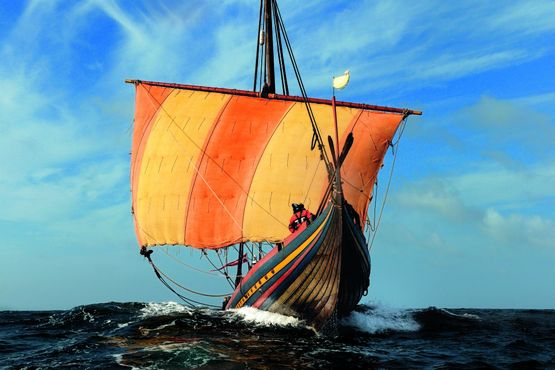The Vikings in Scotland

The first time the Vikings sat foot in Scotland was about AD 800. The Viking Age ends around AD 1100, but in Scotland it can said that there is a “Later Viking Age”, lasting until around AD 1300. The Vikings’ influence in Scotland was great. They especially settled on the Northern and Western Isles, and their culture, language end comercial interests quickly predominated.
In the following we have collected some exercises and questions connected with Scotland. Some of these are also to be found in elsewhere on this website.
• Discuss why and where the Vikings settled in Scotland.
• Look at a map of Scotland and indicate where the Vikings settled and where Viking Age settlements, burial grounds and treasure hoards have been found. Choose, for example, only a smaller area or an island.
• Discuss why the Vikings left their homelands.
• Make a time-line of the Viking presence in Scotland and mark the most important events.
• Illustrate your time-line.
• Look at a map of Scotland and draw the route the Vikings took when they spread across the land.
• Write a list of the Scottish place names that originate from the Vikings’ presence in Scotland.
• Discuss why the Vikings passed through the Northern Isles (see the text on the Pentland Firth).
• Tell of your first encounter with the Vikings as if you were a native of, for example, Orkney or Isle of Man or somewhere else in Scotland.
• Imagine that you are a Viking, and write a poem about the first time you came to a beautiful bay in Scotland.
• Write about a Viking attack on a Scottish monastery. You could perhaps write it in the form of a poem (for example about the monastery on Iona).
• Also draw a cartoon series about the attack.
• Imagine living in the Viking Age. Choose a place in Scotland and write a diary for a day.
The following exercises are rooted in the many events and exciting “Viking places” in Scotland:
• Draw and label a ground plan of Jarlhof.
• Paint a frieze of Jarlshof.
• Imagine a family living in Brough of Birsay. Describe their ages, their clothes, what they ate, how they lived and what they did. Draw them.
• Also draw their family tree.
• Write about the skulls in the church wall in Aberdeenshire. Draw them.
• Describe a day in the life of a fisherman from Robertshaven.
• Build a model of the Island of Colonsay. Use sand and glue. Paint your model and mark the Viking burial grounds.
• Look at a map of Freswick and draw up battle plans – one set functioning in the Viking Age, and one in modern times.
• Describe the sailing route from Scandinavia to Iona, and mark the possible stopping-off points on the way.
• Describe the things which the Vikings took with them on the voyage.
• Tell the story about the day when Magnus was captured by his treacherous cousin on Orkney.
• Find out who Magnus was and why he became a saint.
• Find out more about St Magnus’ Day. How is it celebrated today?
• Design a stained-glass picture for a window in the St Magnus Cathedral.